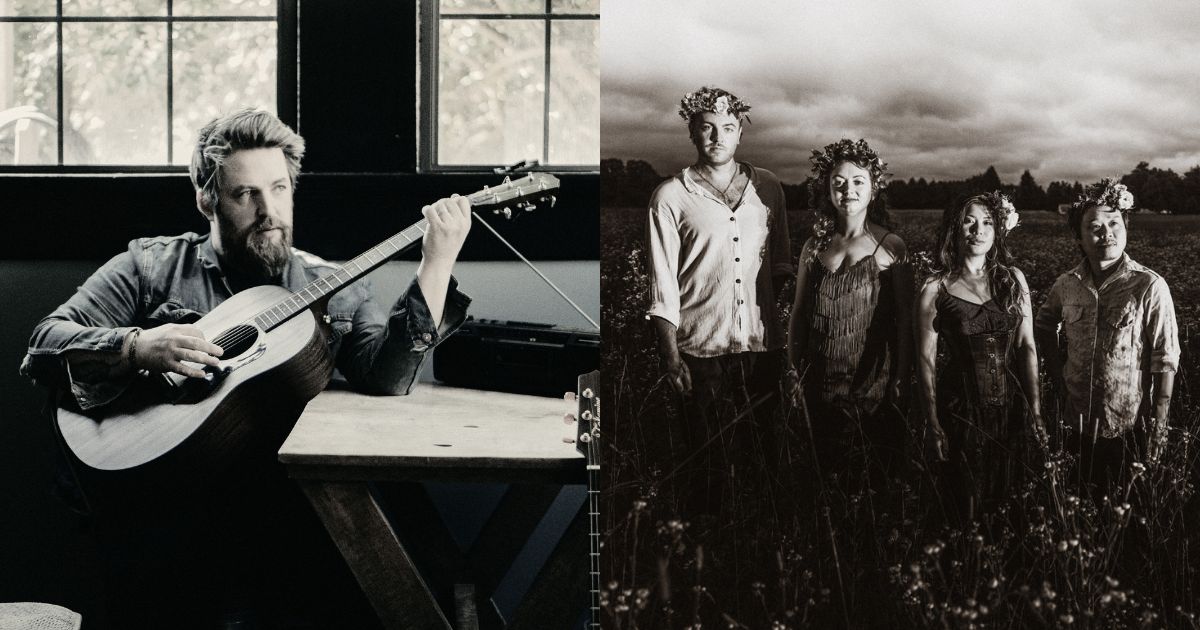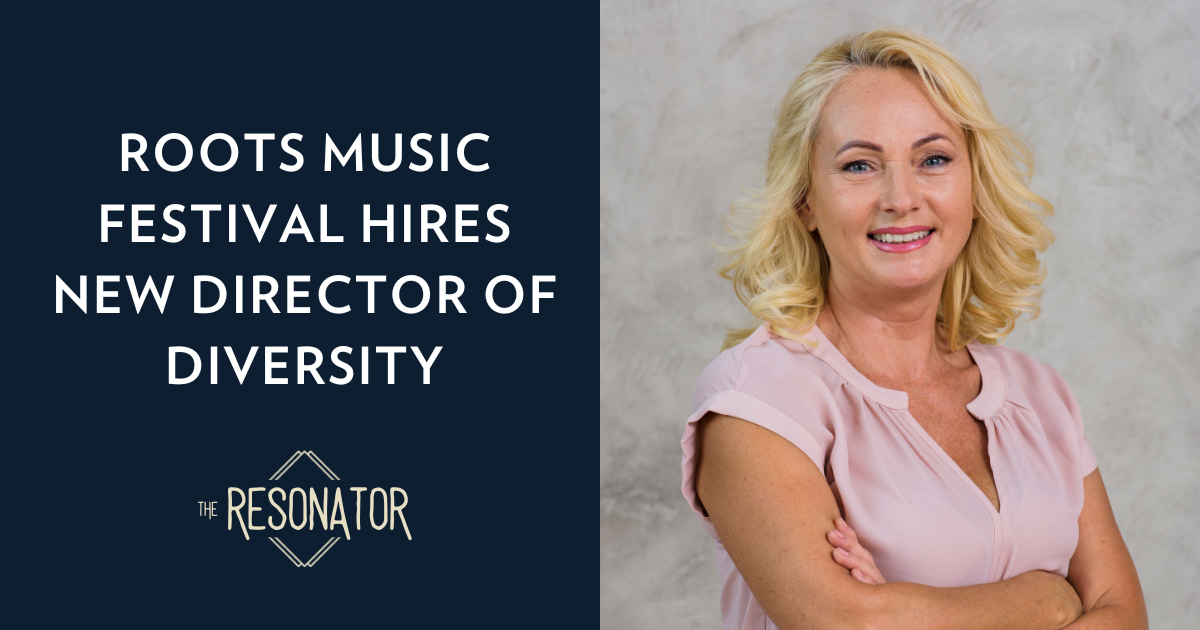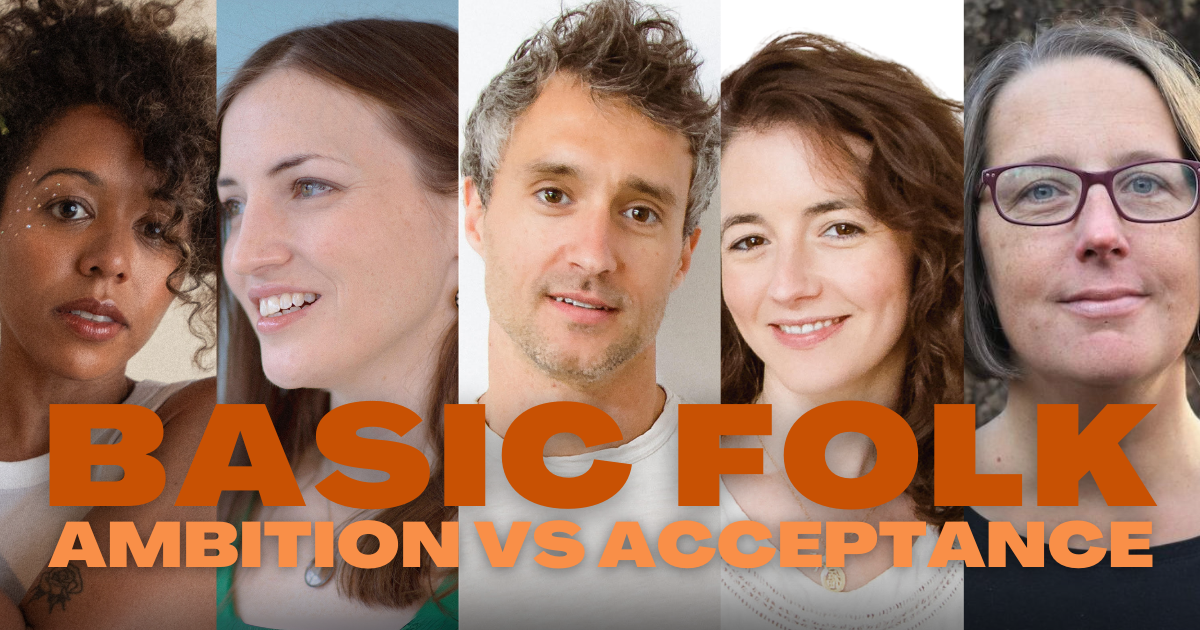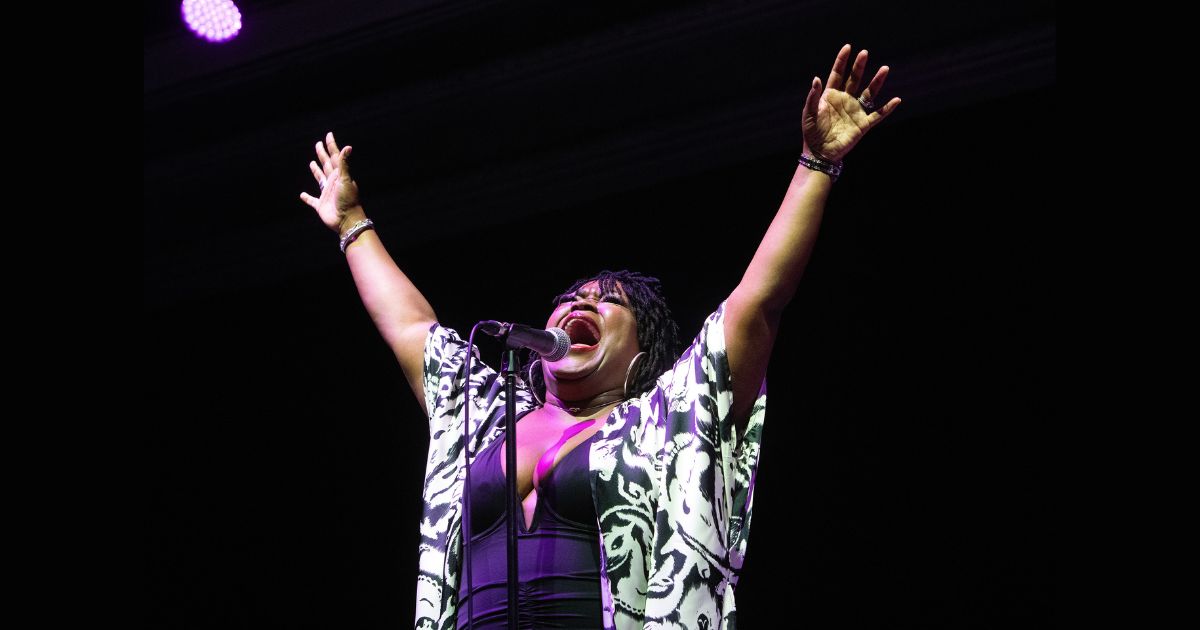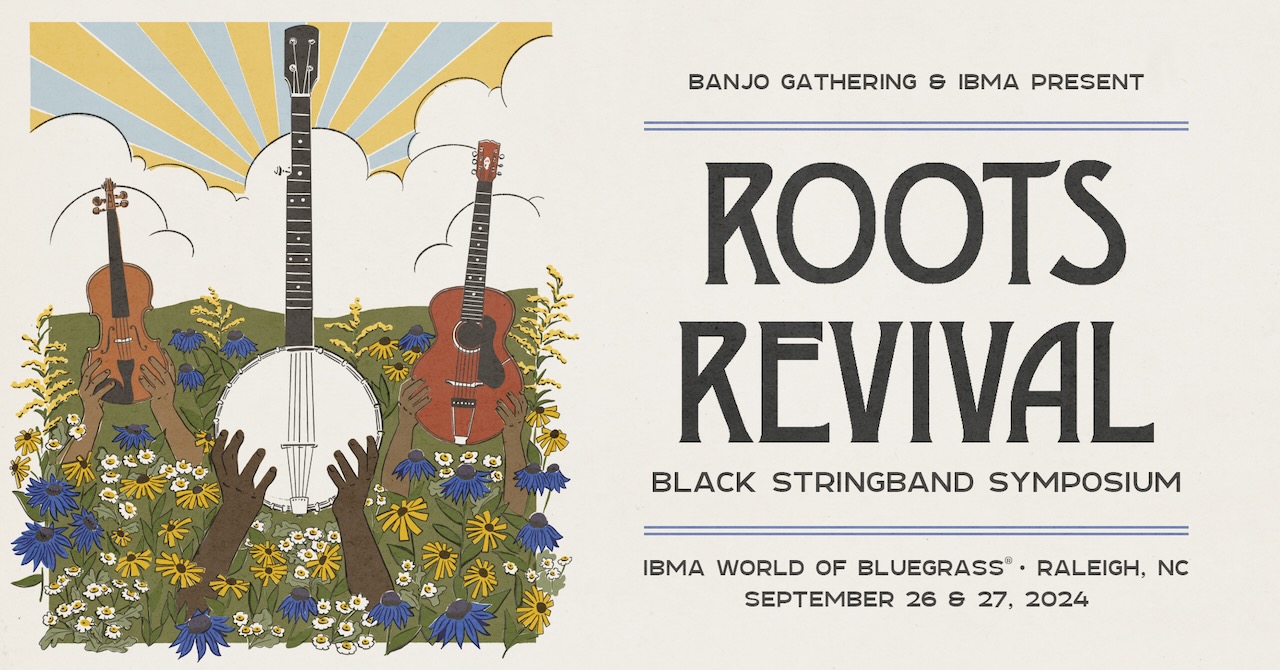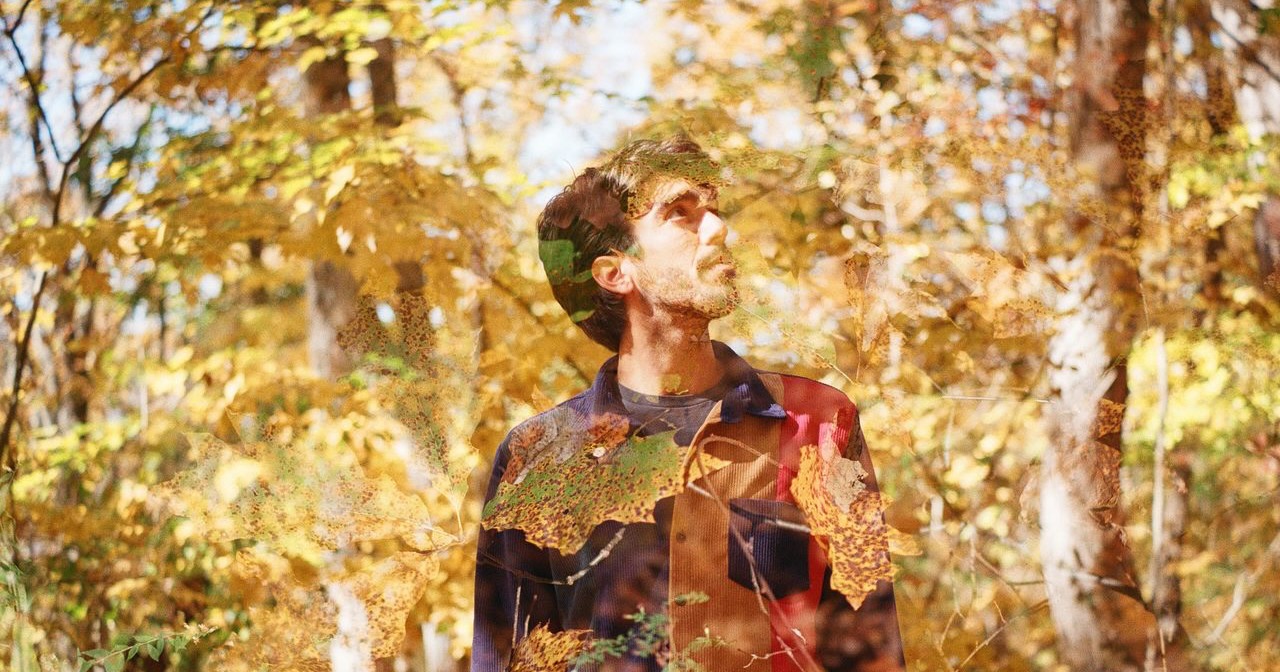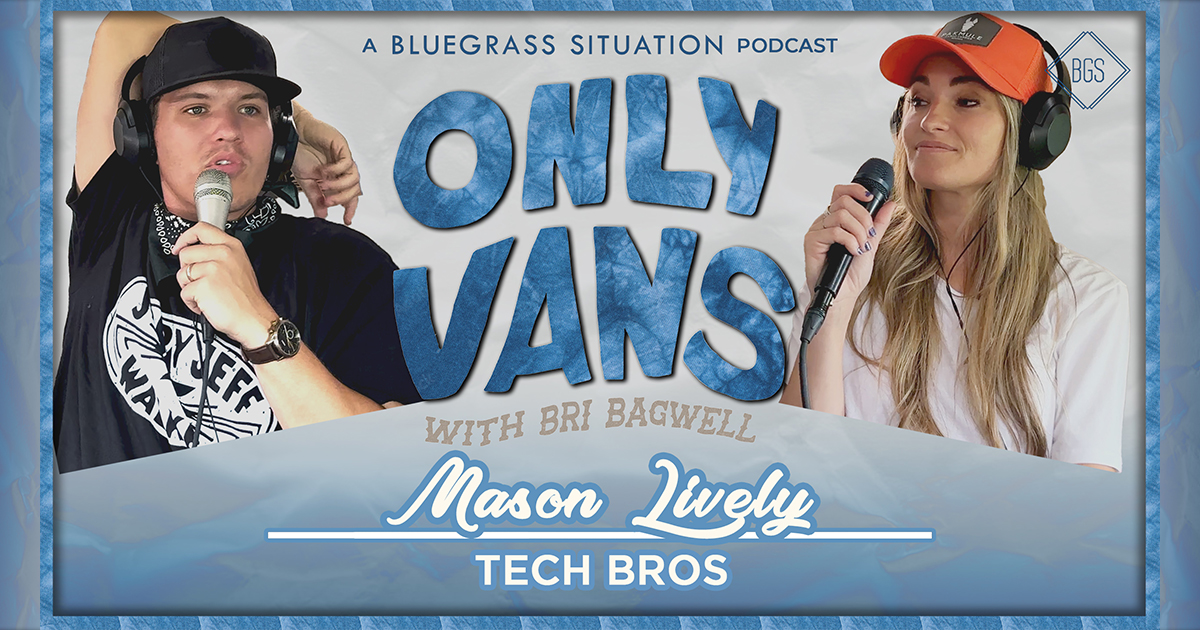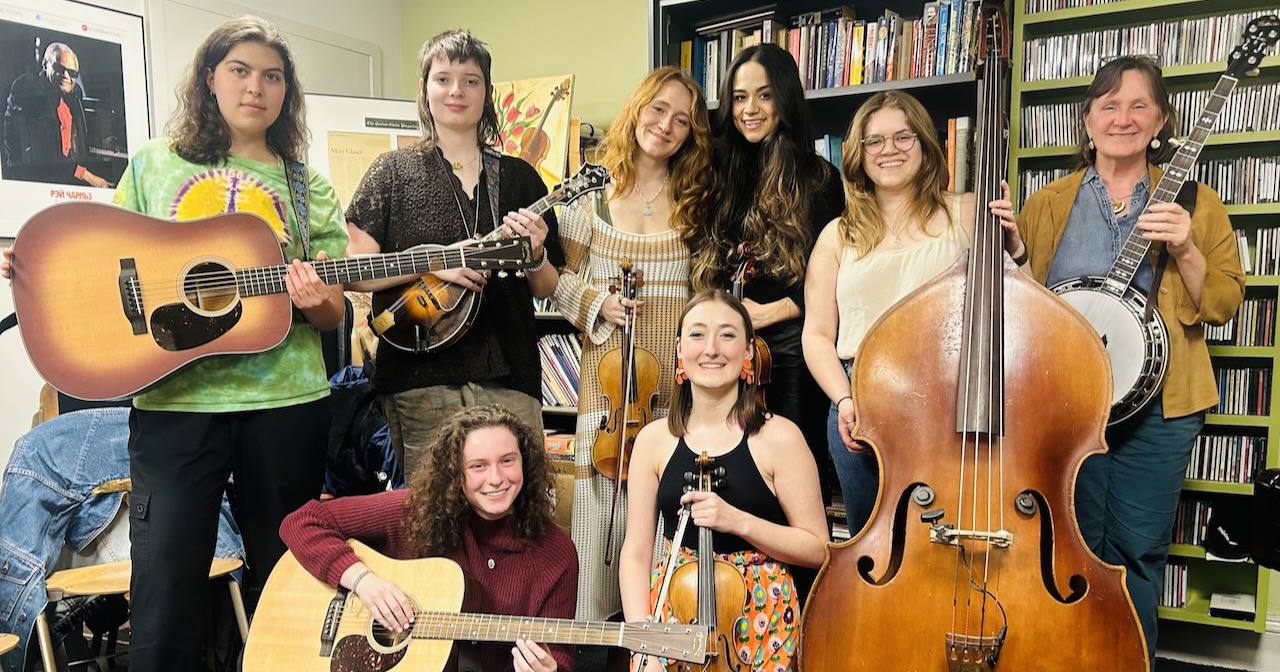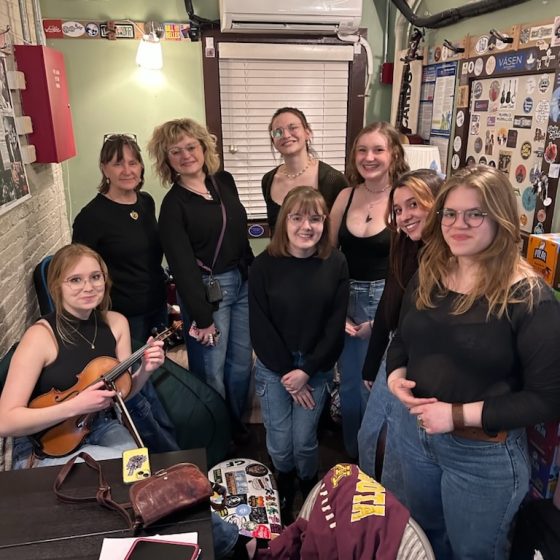There’s something for everyone in this week’s premiere round-up!
From the bluegrass realm, check out a new, suitably spooky track from southwest Virginia mainstay Amanda Cook, a vocal trio number from the fellas of Sideline, and Twisted Pine have a brand new music video for a song all about bluegrass festival fun, “After Midnight (Nothing Good Happens).”
From elsewhere on the genre map, check out tracks debuting from singer-songwriter Bailey Bigger, Swedish artist Sarah Klang has an Americana-flavored number featuring Eric D. Johnson of Fruit Bats, and Emily Frembgen declares she’s “Hard 2 Love.”
Don’t miss a lyric video for the title track from American Idol winner Lee DeWyze’s brand new album, Gone For Days, as well. It’s all right here on BGS and You Gotta Hear This!
Bailey Bigger, “Nancy Jo”
Artist: Bailey Bigger
Hometown: Marion, Arkansas
Song: “Nancy Jo”
Album: Resurrection Fern
Release Date: October 25, 2024
In Their Words: “‘Nancy Jo’ was a more recently written song this year. I wrote it in memory of my grandmother, who represents to me all the women in my life who have sacrificed their own dreams for the inevitable love for those around them. It’s a bittersweet, give-and-take feeling to experience and watch take over the amazing women in our lives, and something I think we can all relate to universally. The duality of my grandmother was beautiful to me. She had so many regrets, dreams she never got to take a real shot at, and hopes, yet so much gratitude, love, and confidence in the path she did choose in this life. She loved her life and brought so much joy and presence to those around her. But we would dream together every time I sat with her in the kitchen. When I reach for my life and my future, it’s not just my hands, it’s all the women in my ancestry, standing behind me, pushing me further.
“This song was highly influenced, musically, by the dream pop movement of the ’90s. My dad gave me his CDs by The Sundays that he wore out in college, and I fell in love instantly with their dreamy guitar tones and Harriet’s voice just painting the canvas with her melodies. I wanted to create a similar production with clear inspiration behind this song, and dream pop is a genre I’ve been itching to explore in my own sound as I get creative with guitar pedals and melodies.” – Bailey Bigger
Amanda Cook, “Devil’s Looking Glass”
Artist: Amanda Cook
Hometown: Fancy Gap, Virginia
Song: “Devil’s Looking Glass”
Album: Restless Soul
Release Date: September 18, 2024 (single); October 18, 2024 (album)
Label: Mountain Fever Records
In Their Words: “I love a spooky song and when Troy Boone (our mandolin player) let me hear his demo of ‘Devil’s Looking Glass,’ I knew I was going to be hooked. Troy’s vivid lyrics make the story feel so real that it’s almost like a true legend coming to life. As Troy shared, he wrote ‘Devil’s Looking Glass’ in high school, drawing inspiration from the rock formation above the Nolichucky River near his childhood home and crafting a haunting song based on a local curse story.” – Amanda Cook
Track Credits:
Written by Troy Boone.
Amanda Cook – Lead vocal
Carolyne Van Lierop – Banjo
Troy Boone – Mandolin
Brady Wallen – Guitar
Josh Faul – Bass
George Mason – Fiddle
Lee DeWyze, “Gone For Days”
Artist: Lee DeWyze
Hometown: Chicago, Illinois
Song: “Gone For Days”
Album: Gone For Days
Release Date: September 13, 2024
Label: Mavelle Records
In Their Words: “‘Gone For Days’ for me reflects on how someone can feel lost, but through that – inspired and transformed by their environment. Ultimately, for me, it’s a story of growth and rebirth. To an extent, it captures my own personal experience of stepping into the unknown when choosing to make the decision to head to Bristol, Tennessee and make this album.
“My hope is that this song can serve as an anthem for those who navigate the dark, and seek their own path. I want ‘Gone For Days’ to offer reassurance that even in the darkest moments, there’s a way forward.
“It was one of the last songs I wrote for this album – and while working with the amazing musicians out in Bristol and taking in the energy of where I was, it dawned on me it wasn’t just a song, it was a documentary for my journey and a snapshot of the profound changes I was experiencing.” – Lee DeWyze
Track Credits:
Written by Lee DeWyze.
Lee DeWyze – Vocals, acoustic guitar
Phil Faconti – Electric guitar
Dave Eggar – Cello, string arrangement
Noah Denton – Bass
Jordan Katz – Horns
Mike Stephenson – Drums, percussion
Blake Collins – Mandolin
Video Credit: Lee DeWyze
Emily Frembgen, “Hard 2 Love”
Artist: Emily Frembgen
Hometown: New York City
Song: “Hard 2 Love”
Album: No Hard Feelings
Release Date: September 13, 2024
Label: Don Giovanni Records
In Their Words: “I made ‘Hard 2 Love’ at Excello Studios in Greenpoint, Brooklyn with my producer Hugh Pool. We recorded it and most of the other tracks on No Hard Feelings live with Keith Robinson on drums, Bruce Martin on piano, and Charles Dechants on bass. Melody Stolpp came in later to record back up vocals. The song owes a lot to Lucinda Williams’s ‘Blue,’ which is often playing in my head. I’m so fascinated with these super simple yet emotionally impactful songs. Lucinda’s ‘Blue’ and ‘Lonely Girls,’ Lou Reed’s ‘Pale Blue Eyes,’ Sondheim’s ‘Losing My Mind.’ My relationship with my father informs this and many of the songs on this album as it has greatly informed the way I exist in the world. This is a cathartic song for me to sing and I hope it’s cathartic for other people. It’s hard to love and to be loved, at least for some of us.” – Emily Frembgen
Track Credits:
Emily Frembgen – Vocals
Hugh Pool – Guitar
Keith Robinson – Drums
Bruce Martin – Piano
Charles Dechants – Bass
Melody Stolpp – Backup vocals
Sarah Klang, “Last Forever” featuring Fruit Bats
Artist: Sarah Klang
Hometown: Gothenburg, Sweden
Song: “Last Forever” featuring Fruit Bats
Release Date: September 13, 2024
Label: Nettwerk Music Group
In Their Words: “It’s a song about the feeling of being ‘the bad one’ in the relationship. Or maybe even that you are ‘the bad one.’ And you love someone who insists on seeing the best in you, and constantly fights on, even though you behave badly. I didn’t really have any idea that it could be a duet until Eric suggested it. He asked me to write down some of my dream artists to duet with, and of course I wrote his name as #1 on the note. Luckily he said yes!
“This collaboration was an eye-opener to me, because it immediately opened two creative worlds: suddenly there were two perspectives and that is very new for me to have. To get to work with someone I admire so much was a dream come true, and I felt like it made me a stronger writer too.” – Sarah Klang
“When Sarah and her writing partner, Theo Stocks, brought this sketch in, I was already all in on it going on the album. The opening line: ‘I’ve got two issues with you, and one of them is that you love me…’ just devastated me out of the gate. The song starts off as a lilting waltz, then turns into a chugging, desperate rock anthem and fades off into the sunset. When they suggested I sing a verse, I was honored and intimidated. I love that each verse comes from a different perspective – and then ends on intertwined stories about lovers trying to figure out the balance of life.” – Eric D. Johnson, Fruit Bats
Sideline, “Is It True”
Artist: Sideline
Hometown: Raleigh, North Carolina
Song: “Is It True”
Release Date: September 13, 2024
Label: Mountain Home Music Company
In Their Words: “It’s really awesome to watch a band take an older song and make it into their own without completely dissecting the original. When Steve brought this one to the table, it was obvious that it was a Sideline song. We applied our drive and energy to it and let the lyrics do the rest of the work. It is also one of the very few – if any – Sideline songs with a trio throughout the whole song, and Bailey nailed the lead part. High-powered and exciting!” – Skip Cherryholmes, guitar and vocals
“What caught my attention about this song was that it is one of the rare cases where the verses have harmony all the way through, and the choruses are sung solo. Typically, it’s vice versa.” – Steve Dilling, banjo and vocals
Track Credits:
Skip Cherryholmes – Guitar, vocals
Steve Dilling – Banjo, vocals
Bailey Coe – Lead vocal
Kyle Windbeck – Upright bass
Nick Goad – Mandolin, vocals
Matt Flake – Fiddle
Twisted Pine, “After Midnight (Nothing Good Happens)”
Artist: Twisted Pine
Hometown: Boston, Massachusettes & Toronto, Ontario, Canada
Song: “After Midnight (Nothing Good Happens)”
Album: Love Your Mind
Release Date: September 17, 2024 (single); October 18, 2024
Label: Signature Sounds
In Their Words: “Every summer, music fanatics assemble their camping gear and instruments and gather together in a field somewhere for that most peculiar of community events: the bluegrass festival. As a band, many of our formative and milestone experiences have taken place at festivals. We’ve learned a lot of lessons – good and bad. This song is our ode to the festival experience. It’s about a universal thought process that happens every night at festivals around the world, ‘Should I be trying to get some sleep right now? Or should I stay up, and pick, and see where the night takes me?’ It’s definitely a coin toss, and depending on how you feel you might regret the late night the next morning, but either way, it makes for a memorable night, and you look forward to what next year’s fest will bring
“The details of the song are based on true events and everyone’s festival vibe. Chris likes to wander around looking for hot dogs; Kathleen croons country ballads in the moonlight; Anh typically stays out until the sun comes up; Dan posts up at the center of the old-time jam on bass. And there’s always that dude at the jam trying to get laid so in our song we named him Dirty Pete.
“Shot on location at two of the very best festivals in our part of the country: the Ossipee Valley Music Festival and Green Mountain Bluegrass and Roots, ‘(Nothing Good Happens) After Midnight’ should be a familiar sentiment for BGS readers. See y’all next year!” – Twisted Pine
Track Credits:
Written by Kathleen Parks, Dan Bui, and Anh Phung.
Kathleen Parks – Lead vocals, fiddle
Chris Sartori – Bass
Dan Bui – Mandolin
Anh Phung – Flute, background vocals
Ethan Robbins – Guitar
Video Credit: Directed, filmed, and edited by Jay Strausser, Jay Strausser Visuals
Photo Credit: Twisted Pine by J. Chattman; Lee DeWyze by Kalin Gordon Photography.
